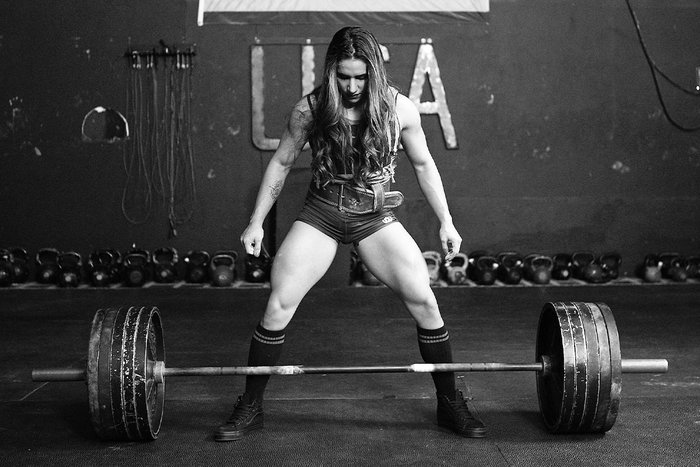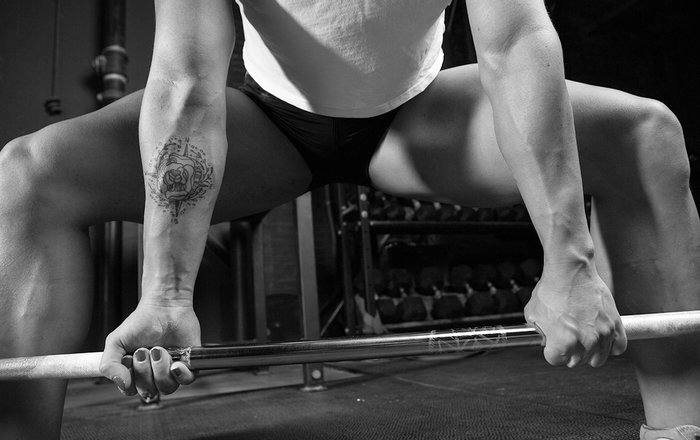Learn the Sumo Deadlift with Stefi Cohen | Mistakes Women Make in the Gym
The sumo deadlift is the black sheep of all deadlift movements. It's the misunderstood cousin of the conventional deadlift, and it gets a lot of hate, primarily by noncompetitive lifters. In my opinion, there is no controversy surrounding the sumo deadlift—just a joke taken completely out of context.
The anti-sumo proponents believe that the sumo deadlift is easier because it reduces the distance the bar needs to travel. While it is true that the range of motion is shortened, that doesn't necessarily indicate decreased difficulty. Body proportions play an even bigger role in the execution than the distance of the bar path.
For example, someone with short arms and a long torso will have a hard time setting up in a good sumo deadlift position and performing it efficiently. In contrast, someone with long arms and a short torso will be able to set up properly with their hips close to the bar and an upright torso, making the movement appear easier and more efficient.
The sumo deadlift is used by powerlifters as well as traditional athletes and fitness enthusiasts. Compared to the conventional stance, a sumo stance reduces the amount of shear force on the spine and strain on the lower back musculature, making it a great alternative for those suffering from back pain. It also targets the quadriceps and adductors to a greater extent than the glutes and hamstrings.
Let's talk about the execution of this lift from the ground up.
Foot Stance
The ideal position is one that allows your shins to remain perpendicular to the floor at the bottom, or starting, position of the lift. Individual differences in adductor flexibility and strength mean this position will vary from person to person.

Your toes should be pointed 45 degrees toward the plates. As the bar leaves the ground, the goal is to move your body around the bar and not the other way around. To achieve this, push your knees out to allow the bar to move up in a straight line.
Keep in mind that the sumo deadlift shortens the range of motion and reduces the moment arm between the bar and the hips in the starting position. The result is a smaller knee angle (less mechanically advantageous) and a larger hip angle (more mechanically advantageous). That is what makes the lift "hard off the floor" and the top of the movement easier.
There is a trade-off here: a shorter range of motion and better leverages for a mechanically disadvantageous position at the start. That's the reason I always preach patience when I teach the sumo deadlift. It's normal for it to take a few seconds for the bar to leave the floor.
Hip Position
You shouldn't attempt to make your deadlift look like anyone else's. To find your start position, perform a slow eccentric deadlift, from the top down. Wherever your hips end is where they should be in your starting position. Body proportions dictate form.

Hand Placement
Your arms should drop straight down like loose ropes, and your hands should end up at shoulder level.

Grip
Either a hook grip or an over-under grip is appropriate. The over-under hand placement feels stronger for most because you have an equal number of fingers on either side of the bar, which cumulatively produce the same amount of force. A hook grip isn't a bad option, but it takes longer to become proficient with it.
Execution
Remember, the sumo deadlift is both a push and a pull movement—think about pushing the ground down as you raise your chest up.
Here are my cues for a bigger sumo deadlift:
- Stay upright.
- Bring your groin close to the bar.
- Keep your knees out.
- Push down into the ground.
- Be patient.
- Your hips and chest should go up at the same time.
Add this move to your lifting arsenal, and you'll be impressed by the benefits!
